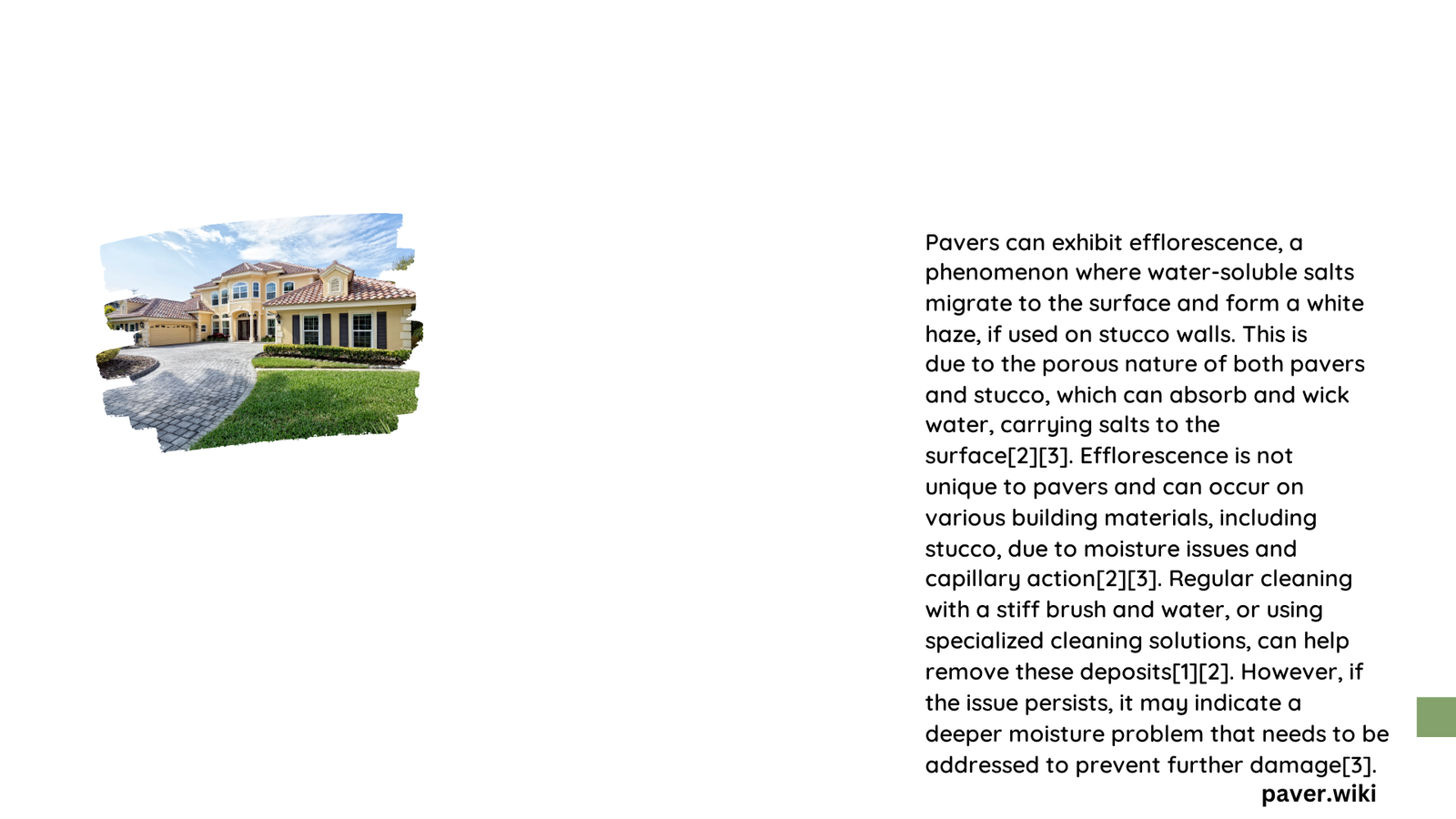Pavers can potentially bleed when installed against stucco walls, creating moisture transfer and potential staining issues. The bleeding process depends on multiple factors including paver composition, water content, and installation techniques. Understanding the chemical properties, prevention methods, and maintenance strategies is crucial for homeowners and contractors seeking to minimize potential damage and maintain structural integrity.\n\n## What Causes Pavers to Bleed on Stucco Walls?\n\nPaver bleeding occurs through several complex mechanisms related to material composition and environmental conditions:\n\n### Chemical Composition of Pavers\n\n| Paver Type | Bleeding Potential | Moisture Characteristics |\n|———–|——————-|—————————|\n| Concrete Pavers | High | Excess water migration |\n| Clay Pavers | Low | Minimal moisture transfer |\n| Ceramic Pavers | Moderate | Controlled moisture content |\n\n### Factors Influencing Bleeding Rates\n\n1. Water Content: Higher water ratios increase bleeding potential\n2. Cement Particle Settlement: Fine particles create migration pathways\n3. Temperature and Humidity: Environmental conditions impact moisture transfer\n\n## How Can You Prevent Paver Bleeding on Stucco?\n\nPreventive strategies involve multiple approaches:\n\n### Waterproofing Techniques\n\n- Apply specialized waterproofing membranes\n- Use HYDRO BAN or similar protective coatings\n- Ensure complete surface coverage before paver installation\n- Allow adequate drying time between coating applications\n\n### Recommended Installation Practices\n\n- Maintain minimum 2-hour curing time for waterproofing membranes\n- Apply coatings 0.015-0.022 inches thick\n- Create slight drainage incline during installation\n- Use air-entraining admixtures to reduce bleeding potential\n\n## What Are the Long-Term Implications of Paver Bleeding?\n\nPotential consequences include:\n\n- Reduced stucco wall structural integrity\n- Increased surface permeability\n- Potential moisture-related damage\n- Aesthetic deterioration of wall surfaces\n\n### Mitigation Strategies\n\n1. Regular wall inspections\n2. Periodic cleaning with pH-neutral cleansers\n3. Application of protective coatings\n4. Professional assessment of installation techniques\n\n## Technical Considerations for Paver-Stucco Interfaces\n\nKey technical parameters include:\n\n- Maximum substrate deflection: L/360 for thin-bed installations\n- Moisture retention management\n- Comprehensive substrate stability assessment\n\n### Quantifiable Bleeding Reduction\n\n- Air-entraining agents can reduce bleeding by up to 50%\n- Proper waterproofing membranes minimize moisture transfer\n\n## Expert Recommendations\n\n- Consult professional installers\n- Use high-quality materials\n- Implement comprehensive moisture management strategies\n- Conduct regular maintenance\n\n### Professional Insights\n\n> “Proper preparation and installation are critical in preventing paver bleeding on stucco walls.” – Construction Engineering Specialist\n\n## Conclusion\n\nUnderstanding and addressing paver bleeding requires a multifaceted approach combining material science, installation techniques, and ongoing maintenance.\n\n### References:\n\n1. HexArmor Concrete Safety Guidelines\n2. Columbia Machine Concrete Products\n3. Mapei Admixture Technologies

